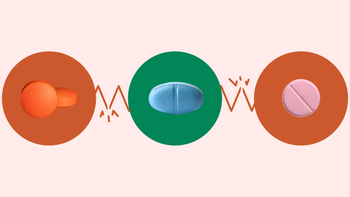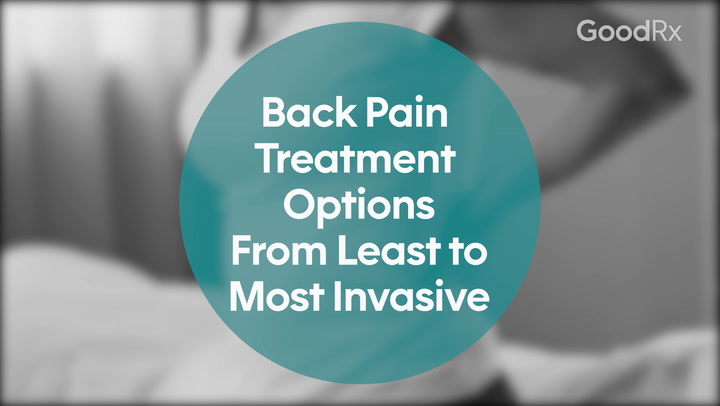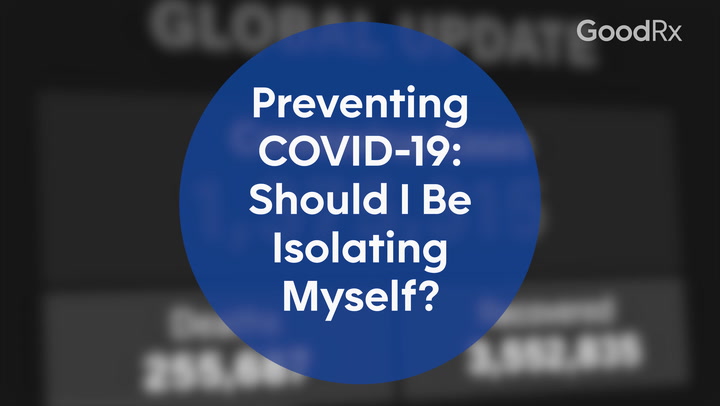
How Many Aleve Can You Take? What to Know About Maximum Naproxen Dosages
Key takeaways:
Naproxen (Aleve, Naprosyn) is a popular pain reliever that’s available as both an over-the-counter (OTC) and prescription medication. People can accidentally take too much, given its wide availability.
How many Aleve (OTC naproxen) you can take depends on many factors. These include your age, kidney function, and why you’re taking it.
Always read OTC and prescription label ingredients to avoid taking multiple medications that contain naproxen. Talk to your prescriber and pharmacist about medications you’re taking to avoid any harm from taking too much naproxen.
Access savings on related medications
Table of contents

Naproxen (Aleve, Naprosyn) is a common pain reliever that’s available at your local pharmacy. It’s a nonsteroidal anti-inflammatory drug (NSAID) that’s found in many over-the-counter (OTC) products. It can help reduce pain, inflammation (swelling), and some common cold symptoms.
Naproxen is also available with a prescription. This higher-dose version is sometimes used to treat different types of arthritis, gout, and menstrual pain.
With so many products that contain naproxen, you can accidentally take more than the recommended dose. Below, we’ll discuss side effects and symptoms from taking high doses of naproxen, as well as what you should do if you experience them.
Note: In this article, “Aleve” refers to the OTC forms of naproxen. “Naproxen” refers to prescription-strength versions or all forms of the medication.
Is it possible to take too much naproxen?
Yes. Cases of naproxen poisoning occur every year. Many cases occur when someone takes too much by mistake. This can happen easily because naproxen is an ingredient in many OTC medications, including cough and cold products. Large quantities of naproxen can cause serious side effects.
But sometimes, someone intentionally takes too much naproxen. If you or someone you know is having thoughts of suicide, you’re not alone, and help is available. Call the National Suicide Prevention Lifeline at 988, or text HOME to 741-741 to reach the Crisis Text Line.
How many Aleve can you take?
As with any medication, always read the prescription and OTC labels carefully. It’s important to understand the instructions and know how to properly take the medication. Be sure to ask your healthcare team or pharmacist if you aren’t sure how much naproxen you can take.
A safe naproxen dosage will vary based on your age and other health conditions. Below, we’ll review some basic dosage guidelines for a few situations.
Aleve maximum dosage for adults
For adults taking Aleve, the maximum total daily dose is 660 mg. The recommended dosage is 220 mg (1 pill) every 8 to 12 hours as needed. But you can take up to 440 mg (2 pills) of Aleve at once for your first dose. After your first dose, you should only take 220 mg per dose.
Be careful when it comes to maximum Aleve dosages. Don’t take more than 440 mg in an 8- to 12-hour period. And don’t take more than 660 mg (3 pills) in 24 hours.
You should only take Aleve for short periods of time. If you’ve been taking it for 10 days for pain or 3 days for fever, it’s best to talk to a healthcare professional.
Prescription naproxen maximum dosage for adults
Some people need higher doses of naproxen to treat their condition. The amount of prescription-strength naproxen will depend on why you’re using it. Generally, most people will be prescribed anywhere between 250 mg to 550 mg twice a day.
The typical maximum dose of prescription naproxen is 1,100 mg per day. But if needed, a prescriber can raise this maximum dose of naproxen to up to 1,500 mg per day for a very short period of time. Do not take more naproxen than what’s written on your prescription label unless your prescriber tells you to do so.
Safe Aleve dosage for children and adolescents
Aleve is only recommended for adolescents age 12 years and older. The safe daily dose is the same as adults. If needed, adolescents can take either 220 mg or 440 mg (1 or 2 pills) for the first dose, followed by 220 mg every 8 to 12 hours after that.
How long does Aleve take to work? Get the answer to this and other frequently asked questions about Aleve here.
What to expect: Learn about notable Aleve side effects — from heartburn to headache — and how to manage them.
Compare options: Find out how Aleve compares to other OTC pain relievers.
Adolescents shouldn’t take more than 440 mg in an 8- to 12-hour period. And the maximum Aleve dose for adolescents is 660 mg (3 pills) in 24 hours.
If your child is under the age of 12, speak to their healthcare team for alternative options.
Safe naproxen dosage for older adults
There is no guidance on the safest naproxen dosage for all older adults. What’s safe for one person may not be right for someone else. But it’s best to take the lowest dose you can for short periods of time.
Your risk of serious naproxen side effects, such as kidney damage and stomach bleeding, goes up as you age. People age 65 or older should take the lowest naproxen dosage needed for the shortest time possible. Limiting your use helps lower the risk of complications.
Ask a healthcare professional about the safest naproxen dosage for you. They’ll take your health history into account when recommending a dose.
Safe naproxen dosage for people with kidney problems
NSAIDs like naproxen can impact the kidneys. So people with kidney problems need to be extra careful when taking them. If you have a history of kidney issues, speak with your healthcare team before taking any form of naproxen, including Aleve.
Naproxen dosages for people with kidney problems is based on a blood test called creatinine clearance (CrCl). If your CrCl is 30 mL/min or more, you’ll likely take the same dosage that people without kidney problems do. You shouldn’t take naproxen if your CrCl is less than 30 mL/min.
Keep in mind that many people don’t know what their current CrCl levels are. This is why it’s important to ask your healthcare team if naproxen (including Aleve) is OK for you to take. If they give you the green light, be sure to confirm a safe dosage with them.
Is it safe to take naproxen every day?
Some people need to take naproxen every day for their health conditions. But you should only take this medication daily if your prescriber recommends it.
Keep in mind that NSAIDs, including naproxen, can put strain on certain organs in the body over time. Taking naproxen for long periods of time can raise the risk of serious side effects. Examples include kidney damage, stomach ulcers or bleeding, and heart attacks. And the longer you take it, the higher your risk of serious side effects becomes. Drug interactions can also increase the likelihood of these side effects.
Still, these serious side effects aren’t common and don’t usually happen at recommended doses for most people.
How long can you take Aleve?
As mentioned above, don’t take Aleve for more than 10 days for pain, or 3 days for a fever, without talking to your healthcare team. Aside from medication safety, it’s also best to see a healthcare professional if you’re experiencing pain for 10 consecutive days, or fever for 3 consecutive days.
What are the symptoms of a naproxen overdose?
Most cases of naproxen toxicity are mild. But in rare cases, symptoms and side effects can be severe.
Mild symptoms of a naproxen overdose may include:
Confusion
Dizziness
Drowsiness
Severe headache
Nausea
Vomiting
Ringing in the ears (tinnitus)
Blurred vision
More serious overdose symptoms include:
Stomach bleeding
Seizures
Coma
Trouble breathing
When should you seek medical attention for a naproxen overdose?
If you’re experiencing mild symptoms of a naproxen overdose, contact Poison Control at 1-800-222-1222 or use their online triage service. They can help you determine if you need further medical attention. You can also contact your healthcare team and ask them for advice.
If someone takes a large amount of naproxen, or they’re experiencing more serious overdose symptoms, call 911 or get medical help right away. They need emergency evaluation and treatment to help prevent serious issues.
Frequently asked questions
It’s not safe for everyone to take Aleve every day for arthritis. There’s a risk of serious side effects with long-term use. Don’t take Aleve for more than 10 days in a row for arthritis pain without talking to a healthcare professional. They can help you decide if taking it every day is right for you.
For headaches, you can take 1 pill (220 mg) of Aleve by mouth every 8 to 12 hours as needed. You have the option to take 2 pills (440 mg) for your first dose. But you should only take 1 pill at a time for doses after that. Don’t take more than 2 pills in a 12-hour period or 3 pills (660 mg) in a 24-hour period.
The dosage of Aleve for back pain is the same as for headaches. Take 1 pill by mouth every 8 to 12 hours as needed. If needed, you can take 2 pills as the first dose. But only take 1 pill at a time for doses after that. Don’t take more than 2 pills in a 12-hour period or 3 pills in a 24-hour period.
You can take 2 pills of Aleve at once for your first dose. If you took 1 pill but it didn’t work well enough, you can take another pill if it’s been less than an hour since the first one. After your first dose, only take 1 pill every 8 to 12 hours as needed.
The bottom line
Safe naproxen (Aleve, Naprosyn) dosages are key to getting the most out of your medication. The maximum dose of over-the-counter (OTC) Aleve is 660 mg (3 pills) per day for adults and adolescents age 12 and older. The typical maximum dose of prescription naproxen is 1,100 mg per day.
Because naproxen is readily available OTC, overdoses can happen by mistake. Naproxen overdose symptoms can include dizziness, vomiting, and confusion. In severe cases, seizures and trouble breathing can also happen.
Reading the label carefully and knowing which ingredients are in certain products can lower the chances of an accidental overdose. Always tell your healthcare team about all prescription and OTC medications you’re taking. That way, they can let you know how much naproxen is safe for you to take.
If you or someone you know is having thoughts of suicide, you’re not alone, and help is available. Call the National Suicide Prevention Lifeline at 988, or text HOME to 741-741 to reach the Crisis Text Line.
Why trust our experts?



References
Brutzkus, J. C., et al. (2023). Naproxen. StatPearls.
Gummin, D. D., et al. (2023). 2022 annual report of the National Poison Data System (NPDS) from America’s Poison Centers: 40th annual report. Clinical Toxicology.
MedlinePlus. (2022). Naproxen.
Mount Sinai. (n.d.). Naproxen sodium overdose.
QPharma, Inc. (2024). Naproxen - naproxen tablet [package insert].
RJ General Corporation. (2024). Aleve - naproxen sodium tablet [package insert].
Shahbaz, H., et al. (2024). Creatinine clearance. StatPearls.
Was this page helpful?
Related Articles
Browse medications
View AllResearch prescriptions and over-the-counter medications from A to Z, compare drug prices, and start saving.




























